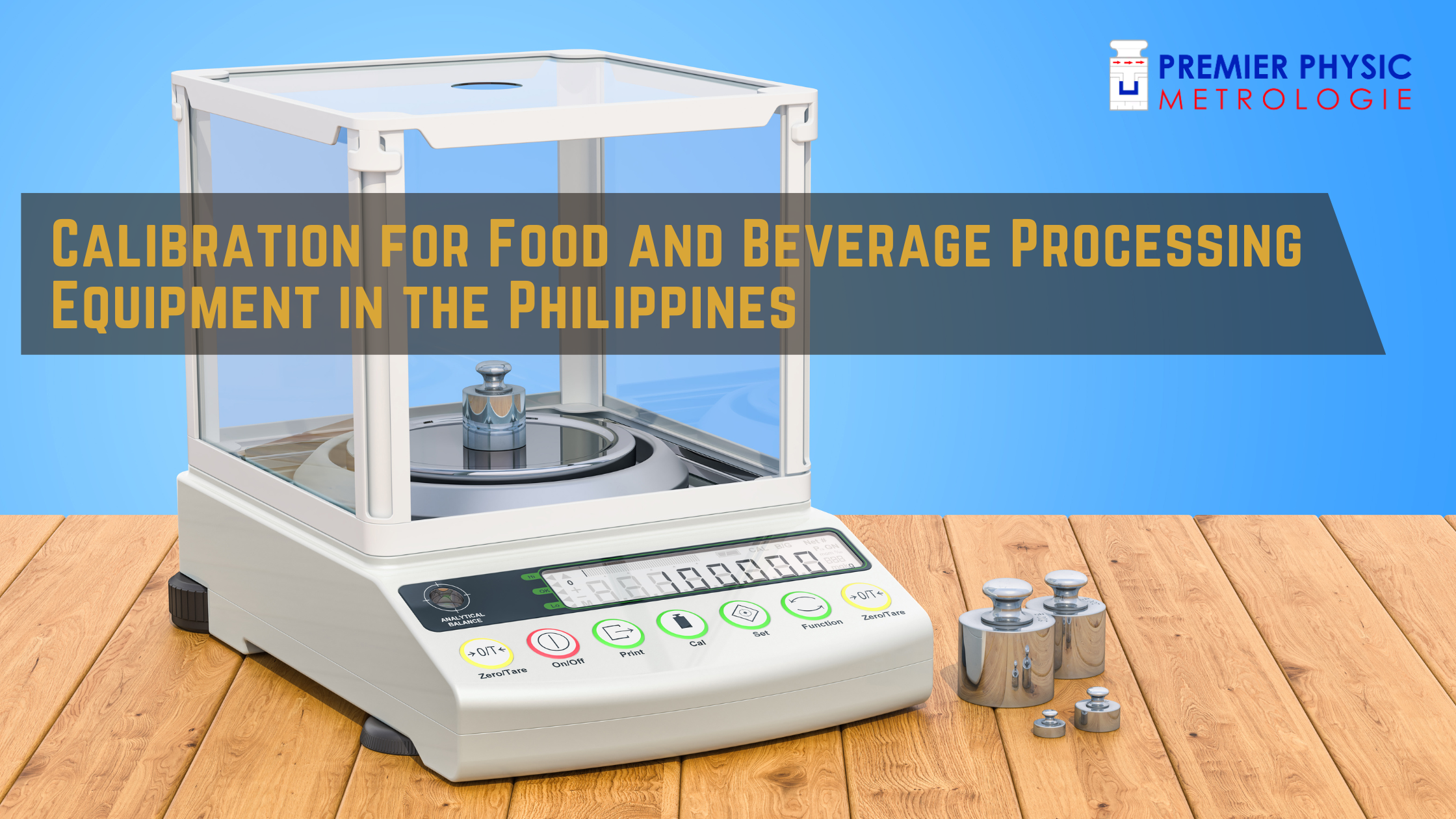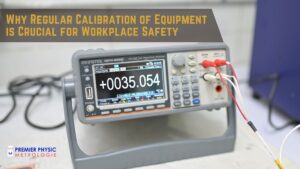Introduction to Calibration
In the realm of food and beverage processing, precision is paramount. Every step of the production process must adhere to strict standards to ensure the safety and quality of the final product. Calibration plays a crucial role in this endeavor, serving as the cornerstone for maintaining accuracy and consistency in equipment performance.
Understanding Calibration
Calibration is the process of verifying the accuracy of measuring instruments and equipment. It ensures that these instruments provide precise and consistent results, aligning with industry standards and regulations. In the context of food and beverage processing equipment, calibration plays a critical role in maintaining product quality, safety, and compliance with regulatory requirements.
Importance of Calibration for Food and Beverage Processing Equipment
Calibration is paramount in the food and beverage industry due to several reasons:
- Quality Assurance: Ensures that equipment operates within specified parameters, resulting in consistent product quality.
- Compliance: Helps businesses adhere to regulatory standards and requirements, avoiding penalties and legal issues.
- Customer Satisfaction: Reliable equipment leads to reliable products, enhancing customer trust and loyalty.
- Cost Efficiency: Prevents wastage by identifying and rectifying inaccuracies promptly, saving resources in the long run.
The Calibration Process
Calibrating food and beverage processing equipment involves several steps:
- Preparation: Clean the equipment thoroughly to eliminate any contaminants that might affect the calibration process.
- Selection of Standards: Choose appropriate reference standards traceable to national or international measurement standards.
- Calibration Procedure: Use appropriate methods such as international, regional or national standards to perform calibration.
- Data Analysis: Record calibration results and compare them against established tolerances to determine if adjustments are necessary.
- Adjustment: If deviations are detected, make necessary adjustments to bring the equipment back to acceptable accuracy levels.
- Documentation: Maintain detailed records of calibration activities for audit trails and compliance purposes.
Benefits of Regular Calibration
Regular calibration offers numerous benefits to businesses:
- Reliability: Ensures equipment accuracy, reducing the risk of producing faulty products.
- Compliance: Helps businesses meet regulatory requirements, avoiding fines and legal repercussions.
- Cost Savings: Prevents production losses and equipment downtime associated with inaccurate measurements.
- Enhanced Reputation: Demonstrates commitment to quality and compliance, enhancing brand reputation and customer trust.
Challenges in Calibration
Despite its importance, calibration poses several challenges for businesses:
- Cost: Investment in calibration equipment and services can be substantial, particularly for small-scale operations.
- Downtime: Calibration activities may require equipment downtime, impacting production schedules and efficiency.
- Skill Requirements: Proper calibration demands trained personnel with technical expertise, adding to operational costs.
- Regulatory Changes: Keeping abreast of evolving regulatory requirements necessitates continuous monitoring and updates to calibration procedures.
Calibration for Food and Beverage Processing Equipment in the Philippines
In the Philippines, calibration for food and beverage processing equipment follows similar principles as elsewhere but may involve specific regulatory considerations unique to the region. Businesses operating in the Philippines must ensure compliance with local standards set by authorities such as the Food and Drug Administration (FDA) and the Department of Trade and Industry (DTI).
Regulatory Requirements
In the Philippines, regulatory bodies such as the Food and Drug Administration (FDA) and the Bureau of Philippine Standards (BPS) impose stringent guidelines on food and beverage processing. Compliance with these standards is not only mandatory but also essential for safeguarding consumer health and maintaining industry credibility.
Calibration Process
Calibration involves a systematic process of comparing measurements of a device to a known standard to determine its accuracy. It typically includes adjusting the equipment to align with the standard and documenting the results for future reference. The process requires specialized tools and expertise to ensure precise calibration.
Benefits of Calibration
The benefits of calibration extend beyond mere regulatory compliance. By ensuring the accuracy of equipment, calibration helps prevent costly errors, reduces product variability, and enhances overall operational efficiency. Moreover, calibrated equipment instills confidence in consumers and regulatory authorities alike, strengthening the brand’s reputation.
Types of Equipment That Require Calibration
A wide range of equipment used in food and beverage processing requires calibration, including temperature gauges, pressure sensors, pH meters, and weighing scales. These instruments are critical for monitoring and controlling various parameters throughout the production process, making accurate calibration indispensable.
Calibration Frequency
The frequency of calibration depends on several factors, including the type of equipment, its usage, environmental conditions, and regulatory requirements. While some equipment may require daily calibration, others may suffice with quarterly or annual calibration schedules. Regular calibration ensures consistent performance and minimizes the risk of equipment malfunction.
Calibration Service Providers
Finding a reliable calibration service provider is essential for ensuring the accuracy and integrity of the calibration process. In the Philippines, several accredited calibration laboratories offer specialized services tailored to the needs of the food and beverage industry. When selecting a service provider, factors such as accreditation, expertise, and reputation should be carefully considered.
Cost Considerations
Budgetary constraints often influence calibration decisions, prompting companies to seek cost-effective solutions without compromising quality. While outsourcing calibration services may incur additional expenses, it offers benefits such as access to specialized expertise and state-of-the-art equipment. Moreover, investing in calibration can yield long-term cost savings by reducing the risk of product recalls and regulatory penalties.
Common Calibration Challenges
Despite meticulous planning, calibration efforts may encounter various challenges, including equipment malfunction, environmental variability, and human error. Addressing these challenges requires proactive measures such as regular maintenance, calibration validation, and staff training. By anticipating and mitigating potential issues, companies can streamline the calibration process and optimize equipment performance.
Future Trends in Calibration
As technology continues to evolve, so too does the field of calibration. Advancements in automation, sensor technology, and data analytics are revolutionizing calibration practices, enabling real-time monitoring, predictive maintenance, and enhanced precision. The future of calibration holds promise for greater efficiency, accuracy, and sustainability in food and beverage processing.
Environmental Factors
Environmental conditions such as temperature, humidity, and altitude can influence equipment performance and calibration accuracy. To mitigate these factors, companies must implement measures such as climate-controlled environments, calibration adjustments, and equipment calibration checks. By minimizing environmental variability, companies can ensure reliable and consistent calibration results.
Training and Education
Effective calibration requires skilled personnel trained in the proper techniques and procedures. In the Philippines, training programs and educational resources are available to equip professionals with the knowledge and skills needed for successful calibration practices. Continuous training ensures that personnel stay abreast of the latest developments and best practices in calibration technology.
Quality Control Measures
Integrating calibration into quality control processes is essential for maintaining product consistency and compliance with regulatory standards. By establishing robust quality control measures, companies can detect deviations from standard operating procedures, initiate corrective actions, and prevent potential quality issues. Calibration serves as a cornerstone of quality assurance, ensuring that products meet the highest standards of safety and quality.
Conclusion
Calibration is an indispensable aspect of food and beverage processing, ensuring the accuracy, reliability, and safety of equipment. By adhering to regulatory requirements, investing in quality calibration services, and embracing emerging trends, companies can optimize their calibration practices and enhance overall operational efficiency. With a commitment to precision and continuous improvement, the food and beverage industry in the Philippines can meet the evolving demands of consumers and regulatory authorities alike.
Calibration for food and beverage processing equipment in the Philippines is a critical aspect of ensuring product quality, safety, and regulatory compliance. By understanding the importance of calibration, following best practices, and staying updated on regulatory requirements, businesses can uphold their reputation and thrive in the competitive market landscape.
Unique FAQs
- What are the consequences of failing to calibrate food processing equipment? Failing to calibrate equipment can lead to inaccurate measurements, compromised product quality, and regulatory non-compliance, resulting in costly recalls and damage to brand reputation.
- How often should food processing equipment be calibrated? Food processing equipment should be calibrated regularly, typically annually or biannually, depending on usage and industry regulations.
- Is calibration mandatory for all food and beverage processing equipment? Yes, calibration is mandatory for equipment involved in critical measurements affecting product quality and safety.
- Can calibration be performed in-house, or is external assistance required? While some basic calibrations can be done in-house, complex equipment may require the expertise of external calibration services accredited by relevant authorities.
- How can businesses minimize downtime during calibration? Businesses can schedule calibration during off-peak hours, maintain backup equipment, and streamline calibration procedures to minimize downtime impact.
- Are there any penalties for non-compliance with calibration regulations? Non-compliance with calibration regulations may result in fines, product recalls, loss of reputation, and legal consequences.




